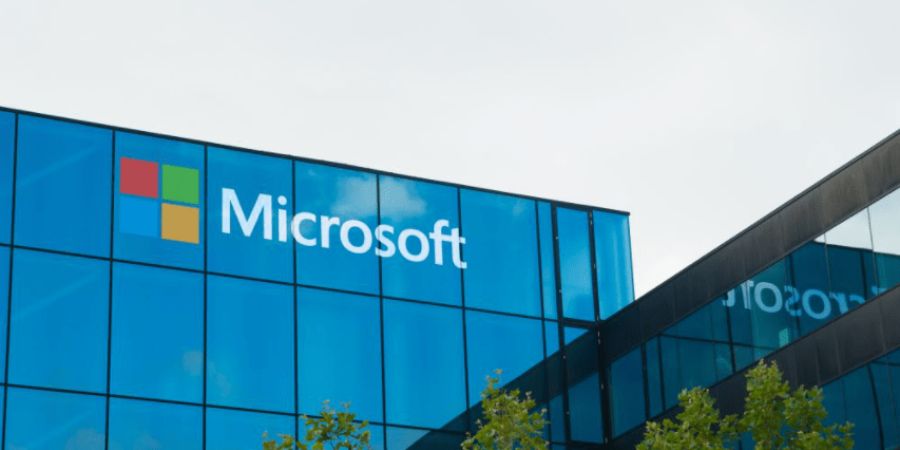Today, it is very easy to assume that Invention of Microsoft continuously had the upper hand in the tech industry. The company’s Microsoft 1976 revenue, amounting to billions of dollars yearly, along with its millions of users and global reach, gives the impression that it is an unstoppable force. However, back in 1976, Bill Gates and Paul Allen had to settle for a mere $22,496 as its revenue for the whole year.
This figure, albeit very small, conveys an important message. It indicates that through careful strategy, proper timing, and great ambition, even the smallest of starts can leave a big footprint. In this guide, early Microsoft history will be our case study of early journeys, that tiny figure would be our example and the lessons from Microsoft’s first revenue for entrepreneurs would be for everyone who is going to build something new.
How Microsoft’s Founders Set the Stage for Growth
In 1975 and 1976, founders Bill Gates and Paul Allen were working in a nascent microcomputer market. They created BASIC for the Altair 8800 and licensed their interpreter to MITS. They operated out of Albuquerque, had fewer than half‑a‑dozen employees, and were still finding their footing.
Despite the small scale, their ambitions were clear: software for microcomputers, tools for hobbyists and developers, and a vision of a future where computing moved from large machines to personal desks. The founders made bets early, laid down relationships (for example with MITS) and registered the trade‑name “Invention of Microsoft” in 1976. These moves planted seeds.
The 1976 Revenue Figure and What It Really Signifies
US $22,496 at the end of 1976 looks more like a side‑project than a startup poised for global impact. That is the point. When early Microsoft history reported that number they were essentially proving the concept: yes we can licence software, yes there is demand.
But they were still very much in early mode. They did not yet dominate operating systems or have Windows, Office, or cloud services. What the number signifies is first‑proof rather than full‑scale. Two years later Microsoft 1976 revenue jumped dramatically (in 1977 the revenue was about US $381,715).
The jump shows that small beginnings can lead to much larger expansion when the product‑market fit aligns and the environment opens up. For entrepreneurs today the lesson is that the initial number matters not for its size but for the validity of the model. If you generate a real sale, you have proof. Microsoft tiny 1976 revenue foreshadowed empire at that time signalled proof.
Early Moves That Launched Microsoft’s Global Path
Early moves that launched Microsoft globally after the 1976 milestone provide the context for why the tiny figure mattered.
- First, they hired their first full‑time employee in 1976.
- Second, they established an official office space in Albuquerque, and registered their name. Those structural moves allowed growth.
- Third, they expanded product lines: from BASIC interpreter to versions for different microprocessors, to operating system offerings later on.
- Fourth, they chose to focus on licensing rather than manufacturing hardware which allowed scalability without heavy capital. This is an example of Microsoft licensing strategy in 1976.
- Fifth, they positioned themselves in the right era: the arrival of personal computers and microprocessors created a massive opportunity.
Microsoft startup journey was ready. So the small $22,496 revenue looks more like an opening chapter of a much longer story. By being ready, by moving early, by building the foundations, how Microsoft grew from small revenue to global empire turned what looked like a tiny number into a global empire.
Lessons from Microsoft’s Start for Today’s Entrepreneurs
What this history teaches is straightforward but powerful.
- One: make sure the early revenue proves something real, even if it is small. Bill Gates and Paul Allen’s early licence to MITS and small figure proved they could sell software.
- Two: invest in infrastructure early, hiring, registering, locating, building brand, even before the numbers get big. Microsoft did that in 1976.
- Three: pick the right trend. Microsoft entered at the dawn of microcomputers. Choosing a growing wave gives you leverage.
- Four: use your model wisely, software licensing rather than hardware manufacturing meant lower capital, higher margins, faster scale.
- Five: Treat the early revenue as a stepping stone not a destination. Microsoft did not stop at $22,496; they pressed on. For anyone building something today it means do not judge your success only by the size of your first number. Instead judge it by whether it is real, whether you learned from it, whether it opens the next phase. These are lessons from Microsoft’s first revenue for entrepreneurs.
When you read that Microsoft 1976 revenue was about US $22,496 you might think the number is irrelevant in light of what the company became. That is the point. What matters is that the number existed, that it was earned, and that it was followed by thoughtful moves, which turned it into something far larger.
For you building a project today the takeaway is clear: start small if you must, but start real. Use your first revenue as validation. Build your foundation. Be ready for scale. Because what looks like a modest figure today may foreshadow Microsoft tiny 1976 revenue foreshadowed empire tomorrow.
Invention of Microsoft shows that careful early steps, bold decisions, and persistence turn small beginnings into global success. How Microsoft grew from small revenue to global empire is a roadmap for anyone willing to start small but think big. Invention of Microsoft is a reminder that every empire has a humble start. Microsoft startup journey is proof that strategy, timing, and ambition together write history. Invention of Microsoft continues to inspire generations. Invention of Microsoft validates the power of vision.



